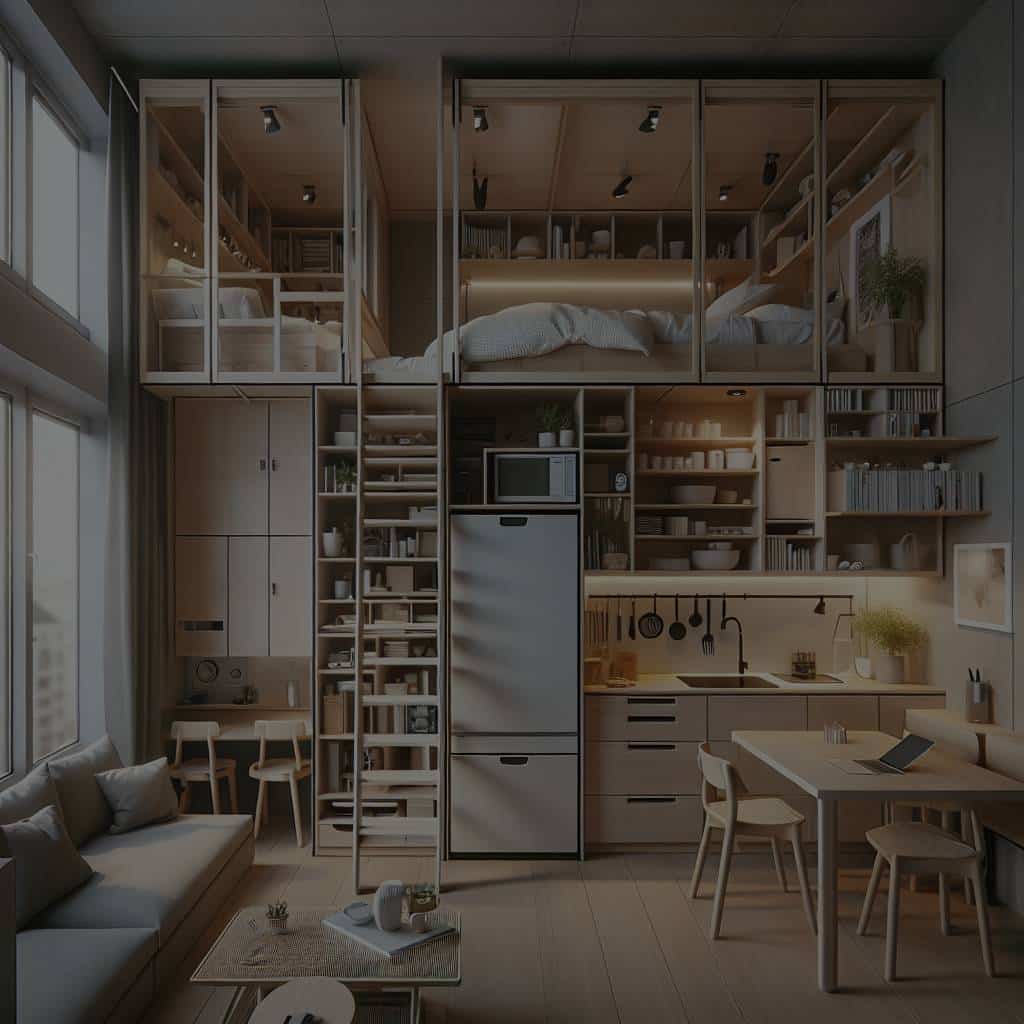How to Maximize Space Efficiency in Micro-Apartment Designs?

With the rise of urban living, micro-apartments have become increasingly popular. Their compact nature and efficient usage of space make them an attractive option to many. However, designing a micro-apartment to maximize its usability and aesthetic appeal requires careful planning. Incorporating space efficiency into the design is crucial. As small as these apartments may be, they should not feel cramped or uncomfortable. Instead, they should inspire a sense of homeliness. In this article, we will explore effective strategies to maximize space efficiency in your micro-apartment.
1. Strategic Furniture Placement
Furniture plays a crucial role in defining the spatial organization of your apartment. Arranging your furniture strategically can make a significant difference in maximizing your studio’s space.
Topic to read : What Are the Trends in Adaptive Reuse of Vacant Retail Spaces for Residential Purposes?
Choosing the Right Furniture
Start by selecting furniture that fits well within the size constraints of your apartment. Bulky items can make your home feel congested. Opt for furniture pieces that are functional, yet compact and sleek in design. Multipurpose furniture, for example, a bed that turns into a sofa, or a table doubling as a storage unit, can be a smart investment.
Positioning Furniture
The positioning of your furniture is as vital as the type of furniture you choose. It is important to ensure that the furniture does not obstruct the flow within the space. For instance, avoid placing large items near the entrance or the main pathway through the apartment.
Also read : What Innovative Techniques Can Be Used for Land Remediation in Urban Development?
2. Utilizing Walls for Storage
Walls offer a magnitude of possibilities when it comes to space-saving. They are often underutilized, but with a little creativity, they can become your best ally in fighting the space crunch in your apartment.
Wall-mounted Shelves and Hooks
Installing shelves on the walls provides additional storage space for books, decorative items, kitchenware, etc. Hooks are equally useful for hanging clothing, towels, and other items.
Foldable Wall Units
Another great concept to explore is the foldable wall units. These units can be used as a work desk, dining table, or bed. When not in use, they can be folded back onto the wall, freeing up valuable floor area.
3. Open Space Living Concept
An open space living concept is a popular design choice for micro-apartments. The idea is to eliminate internal walls and create a single, multifunctional space.
Benefits of Open Space Concept
The biggest advantage of this concept is that it eliminates the limitations of boxed rooms. It allows the space to flow seamlessly, making it appear larger and more open.
Designing Open Space Living
Designing open space living requires strategic planning. The key is to create distinct zones within the space. Using furniture or rugs to demarcate different areas can achieve this.
4. Clever Use of Lighting
Lighting can dramatically influence the perception of space. A well-lit room can look larger than a dimly lit one of the same size.
Natural Lighting
Maximize the use of natural light wherever possible. Large windows and glass doors can fill your apartment with abundant daylight, making it feel bright and airy.
Artificial Lighting
In addition to natural lighting, thoughtful use of artificial lighting is essential. Layered lighting using overhead lights, task lights, and accent lights can create depth and warmth in a room.
5. Color and Material Choices
The colors and materials you choose for your micro-apartment can have a significant impact on its overall feel and appearance.
Colors
Light colors on the walls can make a small room appear larger. They reflect light and enhance the brightness of the space.
Materials
Choosing the right materials for your furniture and floors can also help maximize space. Glass and mirror surfaces, for example, can create an illusion of depth. Similarly, polished and glossy surfaces reflect light and give a feel of spaciousness.
By implementing these strategies, you can transform your micro-apartment into a comfortable and functional living space. Remember, it’s not about the size of your apartment, but how you use the space that truly matters.
6. Incorporating Room Dividers
Room dividers are an excellent way to maintain privacy and create separate spaces without compromising on openness. They help in segmenting your studio apartment into different functional areas.
Benefits of Room Dividers
Room dividers offer a practical way to separate your bedroom from your living room while keeping the layout flexible. They also bring an added aesthetic value to your small apartment, adding texture, color, or pattern, depending on the design you choose.
Selection of Room Dividers
There is a wide range of room dividers available catering to different needs. You can choose from foldable screens, curtains, bookshelves, or even plants. Your choice should align with your lifestyle, the apartment’s overall design, and your privacy needs. For example, bookshelves can serve as a divider and provide extra storage space simultaneously.
7. Smart Storage Solutions
Storage can be a significant challenge in a micro-apartment. The key is to think outside the box and use every inch of the available space. Smart storage solutions can help keep your apartment clutter-free and organized.
Vertical Space Utilization
Often, the vertical space in a small apartment is underutilized. Leveraging this space by installing floating shelves or wall-mounted cabinets helps create more storage without taking up floor space.
Multi-Functional Furniture
Furniture that doubles up as storage is another way to maximize space. For instance, a bed with built-in drawers or a coffee table with storage compartments can be beneficial.
Hidden Storage
Another clever storage solution is to have hidden storage compartments. These can be under the bed, built into the stairs, or even behind mirrors.
Conclusion
Designing a micro-apartment doesn’t mean you have to compromise on functionality or comfort. The goal is to create a harmonious living area that is both stylish and efficient. With strategic furniture placement, using walls for storage, open space living concept, clever use of lighting, right color and material choices, incorporating room dividers, and smart storage solutions, you can make the most out of your small space.
Remember, in designing your micro-apartment, maximize space efficiency without sacrificing your personal style or comfort. Creativity and innovation are key in transforming your small apartment into a comfortable and spacious-feeling home. Images credit goes to their respective owners. Make sure to savepin itsee images for future reference.
